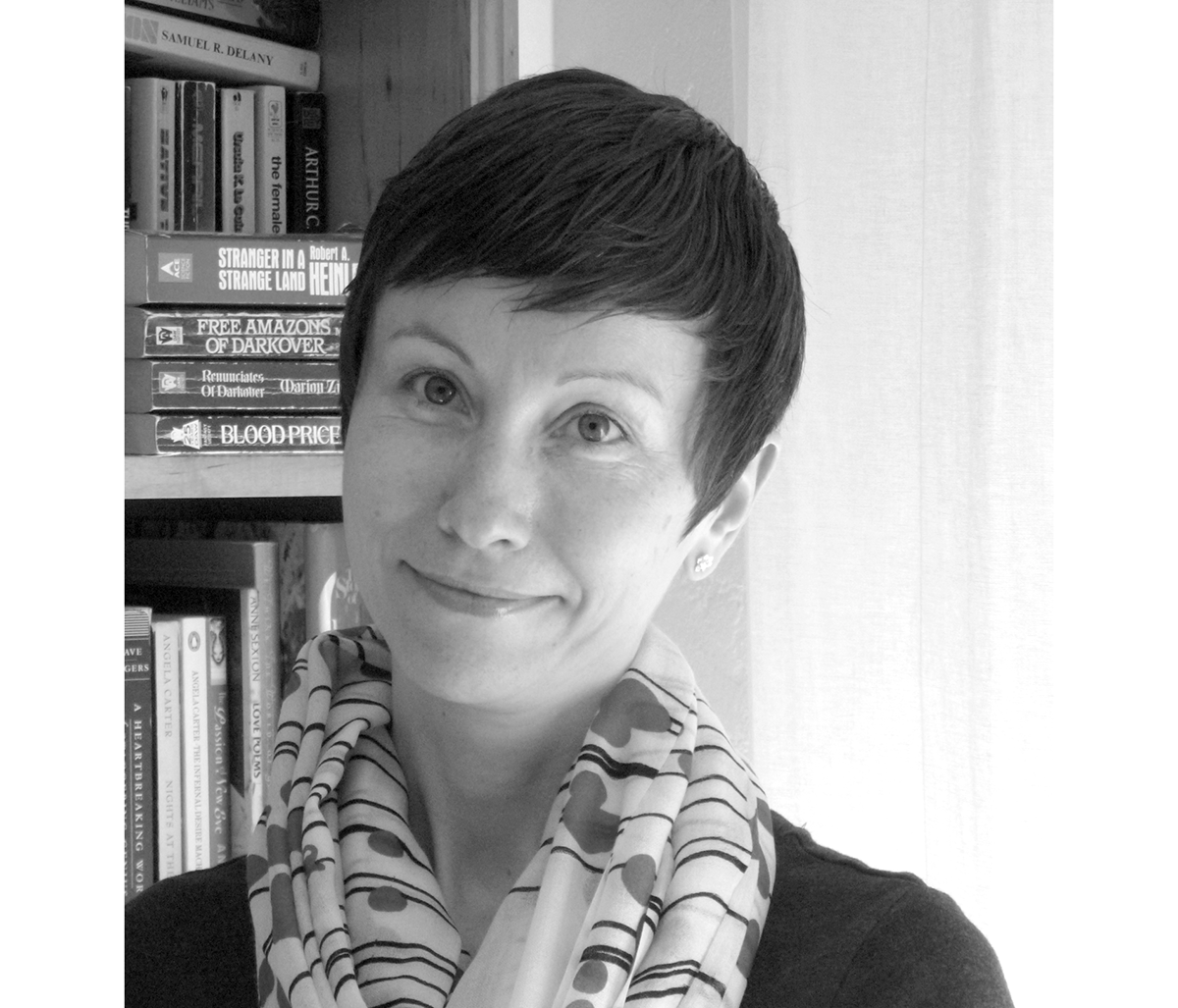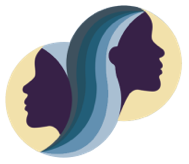
by Jenée Wilde, PhD, Department of English (Folklore)
My graduate work was shaped in part by a noticeable absence. In my gender and queer studies courses, I read theoretical and sociological studies of lesbian, gay, transgender, and queer people, often shorthanded as LGBTQ. Wait a minute . . . something is missing. What happened to the “B” in all this theory and research?
The erasure of bisexuality and bisexuals is subtle but pervasive in academic discourses. I’ve seen it happen in several forms, such as the “lip service” device where bisexuality is only nominally included in critical analysis or methodological structures. Or the “footnote” technique where in tiny print it explains that the term “gay” is used for all same-sex desires, regardless of a person’s bisexual identity. Or the “umbrella” method where bisexual desires are lumped under the category of “queer.” Or the “revisionist” approach where bisexuality is dismissed altogether as an outmoded term in favor of “post-modern” identities and sensibilities.
What is bisexuality? Who counts as bisexual? Does bisexuality reinforce gender and sexual binaries? Is bisexuality queer? These are complex questions affected by a long history of social and scientific discourses as well as persistent myths and misunderstandings disguised as “common knowledge.” A clear discussion of these issues in a classroom requires laying some groundwork—not easy if you don’t know where to begin.
Below is my own “best of” annotated list of popular and academic materials for class. These blogs, articles, chapters, and books illuminate the challenges of talking about bisexual identity, behavior, representation, and knowledge. The list cuts across academic disciplines and points toward where to go for more information. If you don’t find what you need here, search for key words (e.g. politics, media, race, class, queer) in The Journal of Bisexuality or email me at jenee@uoregon.edu for some ideas.
Non-Academic Resources
“A Brief History of the Bisexual Movement.” BiNet USA, n.d. Web. This timeline illustrates how bisexual activists have been part of the modern lesbian and gay rights and civil liberties movement since the 1960s.
Beredjick, Camille. “Why Some Bisexual People Don’t Feel Welcome in the Queer Community.” Everyday Feminism, 13 Oct. 2014. Web. In this video, a bisexual activist shares her experiences of not feeling queer enough for the queer community.
“BiNet USA Bisexual Media Guide, Marriage Edition.” BiNet USA’s Blog, 18 June 2015. Web. This glossary provides non-biased terminology for talking about bisexuality and bisexuals, as well as pointing out biased terms.
Burleson, William E. Bi America: Myths, Truths, and Struggles of an Invisible Community. New York: Harrington Park Press, 2005. Print. Written for a popular audience, this book provides an ethnographic look into bisexual behavior, identity, and community in the United States. Chapters 2 and 3 offer useful introductions for how bisexuality is defined and how it relates to the world.
North, Anna. “Bisexual Women Almost Twice As Likely To Be Abused As Straight Women.” BuzzFeed, 25 Jan. 2013. Web. A CDC study of more than 9,000 women showed that 61.1 percent of bisexual women had experienced rape, physical violence, or stalking by a partner at some point in their lives—the highest rate among all sexual identity groups.
Ochs, Robyn. “Bisexuality: A Few Quotes from Robyn Ochs.” RobynOchs, n.d. Web. National speaker and educator Robyn Ochs shares her widely quoted definition of bisexuality. The page also has links to bi organizations and community resources online.
RichardsFink, Patrick. “The Monogamous Bisexual.” Eponymous Fliponymous, 14 Sept. 2012. Web. This article busts the myth that bisexuals, and specifically male bisexuals, are incapable of monogamy. Many of the postings on this blog are useful for understanding bi myths and erasure, particularly “Bisexual Erasure in Academic Research 1” and “Happy New Year! or, Spare Me The ‘No Labels’ Biphobia.”
Understanding Issues Facing Bi Americans. The Movement Advancement Project, BiNet USA, and Bisexual Resource Center, Sept. 2014. PDF. Within bi communities, bisexuality is understood as describing “people who have the capacity for emotional, romantic and/or physical attraction to more than one sex or gender.” This guide introduces the bisexual community and offers an overview of the economic and health disparities facing the community.
“Way Beyond the Binary.” Bisexual Resource Center, n.d. Web. This article explains the fallacious and biphobic reasoning behind the “bi is binary” argument used to dismiss bisexuality.
Academic Resources
Angelides, Stephen. A History of Bisexuality. Chicago: University of Chicago Press, 2001. Print. This book offers a genealogical history of bisexuality as a category of knowledge, tracing the construction of (bi)sexuality in early scientific and psychoanalytic discourses to its deconstruction in sexual identity movements and queer theory.
Barker, Meg, et al. The Bisexuality Report: Bisexual Inclusion in LGBT Equality and Diversity. Buckinghamshire, U.K.: Open University, 2012. PDF. The report offers definitions of non-binary sexualities, summarizes studies on the high rates of depression, suicide, and other health disparities for bisexual people, discusses social factors that may contribute to these health disparities, and offers policy advice to healthcare professionals.
Bisexual Invisibility: Impacts and Recommendations. San Francisco, CA: San Francisco Human Rights Commission LGBT Advisory Committee, 2011. PDF. This report describes bisexual invisibility and erasure, biphobia, and the social factors surrounding these issues.
Erickson-Schroth, L. and J. Mitchell. “Queering Queer Theory, Or Why Bisexuality Matters.” Journal of Bisexuality 9 (2009): 297-315. The article illustrates how some literary criticism by mainstream and queer scholars have contributed to bisexual erasure and how bisexual theory has a role to play in queering queer theory.
Hall, Donald E. and Maria Pramaggiore, eds. RePresenting Bisexualities: Subjects and Cultures of Fluid Desire. New York: New York University Press, 1996. The two “Epistemologies of the Fence” introductions help to frame bisexuality in the theoretical and critical contexts of literary and film studies. Also, Pramaggiore’s essay “Straddling the Screen: Bisexual Spectatorship and Contemporary Narrative Film” illustrates how certain films construct a bisexual spectator and invite bisexual reading practices.
Rodrigues Rust, Paula C. “Bisexuality: The State of the Union.” Annual Review of Sex Research 13 (2002): 180-240. This long article reviews the historical and cultural processes that produced the paradoxical construction of bisexuality as a combination of two mutually exclusive binaries, discusses the cultural attitudes that result from this paradox, and shows how scientific research on bisexuality has been guided by these popular conceptions of bisexuality. The literature review includes “research on the prevalence of bisexuality, prejudice against bisexuals, patterns of bisexual behavior, and the meaning of bisexual self identity” (180).
San Filippo, Maria. The B-Word: Bisexuality in Contemporary Film and Television. Bloomington: Indiana University Press, 2013. The book’s Prologue, “Chasing Amy and Bisexual (In)Visibility,” and the Introduction, “Binary Trouble and Compulsory Monosexuality” provide a helpful framework for understanding the critical and theoretical problems of bisexual representation in cinematic media.
Wilde, Jenée. “Dimensional Sexuality: Exploring New Frameworks for Bisexual Desires.” Sexual and Relationship Therapy 29.3 (2014): 320-338. Print. The article discusses how our Western epistemological frameworks shape knowledge about sexuality and proposes that the domain of sexuality as a whole may be reorganized within a non-binary, multidimensional framework.
Yoshino, Kenji. “The Epistemic Contract of Bisexual Erasure.” Stanford Law Review, 52 (2000): 353-461. Print. A key document in bisexuality studies, this long article rigorously explains the social and political stakes of bisexual erasure by monosexuals in both majority and minority identity groups.
—Jenée Wilde received her PhD in English (Folklore emphasis) from the University of Oregon in 2015. Her interdisciplinary doctoral research examines bisexuality in science fiction literature and media and the overlaps among bisexual communities and science fiction fans. She was awarded the 2014-15 CSWS Jane Grant Dissertation Fellowship for her project, “Speculative Fictions, Bisexual Lives: Changing Frameworks of Sexual Desire.”

